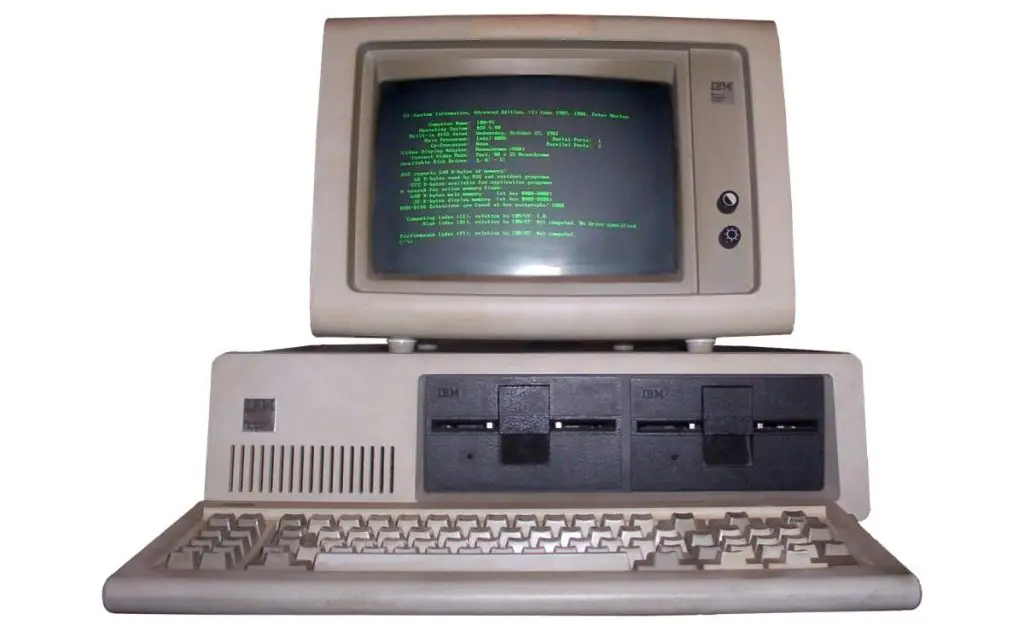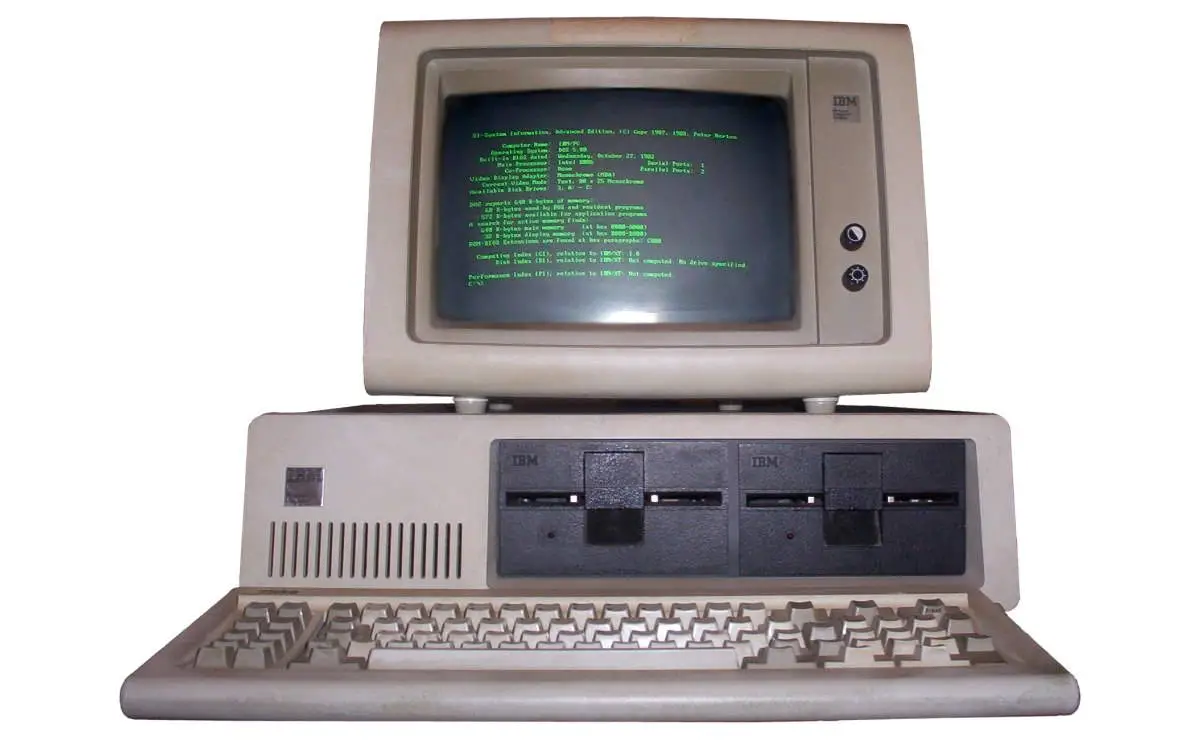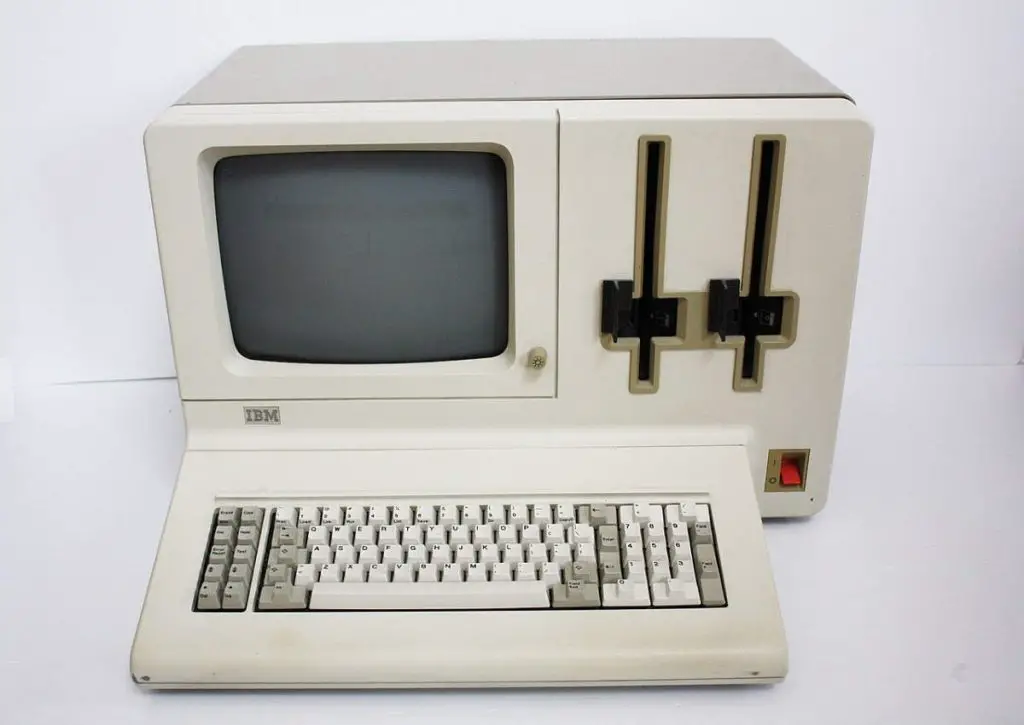On August 12, 1981, the Personal Computer, (model 5150, commonly known as the IBM PC) was released. This machine (and its descendants) started the PC revolution. It was a very small machine that could not only process information faster than those millions-of-dollars huge computers of the 1960s but also hook up to the home TV set, process text and store more words than a huge cookbook, all for a price tag of less than $1,600.
Unsurprisingly, it suddenly shook the personal computer market. The specifications of the IBM PC became one of the most popular computer design standards in the world. Even today, The majority of modern personal computers (PCs) are distant descendants of the IBM PC.
Today’s (August 12) story of what happened this day in Science, Technology, Astronomy, and Space Exploration history.
The story of the IBM PC

Until the 1980s, IBM had largely been known as a provider of powerful, big, and very expensive business computer systems, which were known as “mainframes”.
But, the company failed to keep up with competitors in the growing minicomputer market.
To fill that gap, the company gave the go-ahead to William C. Lowe (January 15, 1941 – October 19, 2013, known as one of the “Fathers of the IBM PC”), the lab director in the company’s Boca Raton, Fla., facilities. Lowe set up a task force that developed the proposal for the first IBM PC.
Early studies had concluded that there were not enough applications to justify acceptance on a broad basis and the task force was fighting the idea that things couldn’t be done quickly in IBM. One analyst was even quoted as saying that “IBM bringing out a personal computer would be like teaching an elephant to tap dance.”
Despite these stereotypes about IBM being an inert company, during a meeting with top executives in New York, Lowe claimed his group could develop a small, new computer within a year.
Lowe picked a group of 12 strategists who worked around the clock to hammer out a plan for hardware, software, manufacturing setup, and sales strategy. It was so well-conceived that the basic strategy remained unaltered throughout the product cycle.
Don Estridge (June 23, 1937 – August 2, 1985, see notes 1), acting lab director at the time, volunteered to head the project. Joe Bauman, plant manager for the Boca Raton site, offered manufacturing help. Mel Hallerman, who was working on the IBM Series/1, stepped forward with his software knowledge and was brought in as the chief programmer.
Estridge decided early that to be successful and to meet deadlines, the group had to use tested vendor technology, a standardized, one-model product, open architecture, and outside sales channels for quick consumer market saturation.
The manufacturing strategy of the IBM PC team was to simplify everything, devise a sound plan, and not deviate. There was no time to develop and test all components. So they shopped for completely functioning and pretested subassemblies, put them together, and tested the final product.
In other words, the development team broke all the rules. They went outside the traditional boundaries of product development within IBM. They went to outside vendors for most of the parts, went to outside software developers for the operating system and application software, and acted as an independent business unit.
The operating system (IBM PC DOS [Disk Operating System]) was co-developed by Microsoft: in November 1980, IBM awarded a contract to them to provide a version of the CP/M OS to be used in the IBM PC. Microsoft also sold that operating system as MS-DOS (Microsoft Disk Operating System) and became the multi-billion dollar company we know of today.
IBM also chose Intel 8088 as the system’s CPU, instead of 8086. Because 8088 was reasonably fast (at 4.77 MHz), cheap, and unlike the nearly identical 8086, could be bought in huge quantities.
8088 and 8086 are both 16-bit internally, but 8088’s 8-bit bus (shortened form of the Latin omnibus, a bus is a communication system that transfers data between components inside a computer, or between computers) was also more compatible with the 8-bit hardware IBM was already planning to use elsewhere in the IBM PC.
Those tactics enabled them to develop and announce the IBM PC in 12 months, at that time faster than any other hardware product in IBM’s history.
On August 12, 1981, at a press conference at the Waldorf Astoria ballroom in New York City, Estridge announced the IBM Personal Computer with a price tag of $1,565. Two decades earlier, an IBM computer often cost as much as $9 million and required an air-conditioned quarter-acre of space and a staff of 60 people to keep it fully loaded with instructions. The new IBM PC “could not only process information faster than those earlier machines but it could hook up to the home TV set, play games, process text, and harbor more words than a fat cookbook”.
The IBM PC became a huge success
The response to the announcement was overwhelming. One dealer had 22 customers come in and put down $1,000 deposits on the machines for which he could not promise a delivery date.
By the end of 1982, qualified retail outfits were signing on to sell the new machine at the rate of one a day as sales actually hit a system-a-minute every business day.
Newsweek magazine called it “IBM’s roaring success,” and the New York Times said, “The speed and extent to which IBM has been successful has surprised many people, including IBM itself.”
The IBM PC had a very advanced graphics subsystem, support for massive amounts of RAM (for the day, 16 KB – 256 KB) that reduced or eliminated the computer’s need to access a disk while within an application, a fast system bus, math co-processor support, and a faster floppy and hard drive interface than its competitors, made it much faster overall than those machines at tasks important to businesses (for example, large spreadsheets or relational databases).
The price of an IBM PC was starting at US$1,565 (equivalent to $4,700 in 2022) at its release. For comparison, introduced just two weeks earlier, IBM System/23 Datamaster was US$9,000 (equivalent to about $27,000 in 2022). Not to mention here the millions-of-dollars mainframe computers. So, it was also cheap for its time, very cheap.
This price bought a system unit, a keyboard, and a color/graphics capability. Options included a display, a printer, two diskette drives, extra memory, communications, a game adapter, and application packages – including one for text processing.
The IBM PC was the size of a portable typewriter and contained 40K of read-only memory and 16K of user memory, as well as a built-in speaker for generating music. Its five expansion slots could be used to connect such features as expanded memory, display and printing units, and game “paddles.” The unit also ran self-diagnostic checks.
Containing 83 keys, the revolutionary keyboard (see the video below for amazing details about IBM PC’s keyboard) was connected to the unit by a six-foot coiled cable, which meant users could rest it in their lap or on the desktop without moving the rest of the system. It also included such advanced functions for the times as a numeric keypad and 10 special keys that enabled users to write and edit text, figure accounts, and store data.
IBM PC Options included:
- A printer that could print in two directions at 80 characters per second in 12 different character styles, and also check itself for malfunctions and provide an out-of-paper signal.
- A color/graphics monitor with 16 foreground and background colors and 256 characters for text applications. Its graphics were in four colors.
- Multiple 32K and 64K memory cards could be plugged into the option slots to increase memory to 256K.
Sales significantly exceeded IBM’s expectations by as much as 800%, shipping 40,000 IBM PCs a month at one point.
By 1984, IBM’s revenue from the PC market was $4 billion, more than twice that of Apple.
A 1985 Fortune survey found that 56% of American companies with personal computers used PCs, compared to Apple’s 16%.
The computer started the PC revolution. Less than a year after the IBM PC’s debut, the first PC-compatible clone was released in June 1982. In a few years, “IBM-Compatible” personal computers were everywhere.
In short, the introduction of the IBM PC set a worldwide personal computing standard and helped to establish a multibillion-dollar Personal Computer industry.
Video: The Original IBM PC 5150, the story of the world’s most influential computer
IBM PC is the computer that’s the original ancestor of the one you probably still own. Today, nearly 40 years after its introduction, modern PCs are used for everything from the kinds of business applications the system was originally designed for, to scientific work, to high-end gaming. But it all started back in 1981 with the IBM 5150.
Below is a great video published by the Modern Classic channel telling the story of IBM 5150 which started the PC revolution.
August 12 in Science, Technology, Astronomy, and Space Exploration history
- 1977: Space Shuttle Enterprise successfully made its first free flight test.
- 1981: IBM PC (Personal Computer) was released.
Notes
- Don Estridge and his wife Mary Ann were killed in the crash of Delta Air Lines Flight 191 at Dallas/Fort Worth International Airport on August 2, 1985. He was 48 years old.
Sources
- IBM PC (Personal Computer) on Wikipedia
- “The IBM PC’s debut” on the IBM website
- “The birth of the IBM PC” on the IBM website
- Moon Landings: All-Time List [1966-2025] - February 2, 2025
- What Is Max-Q and Why Is It Important During Rocket Launches? - January 16, 2025
- Top 10 Tallest Rockets Ever Launched [2025 Update] - January 16, 2025

